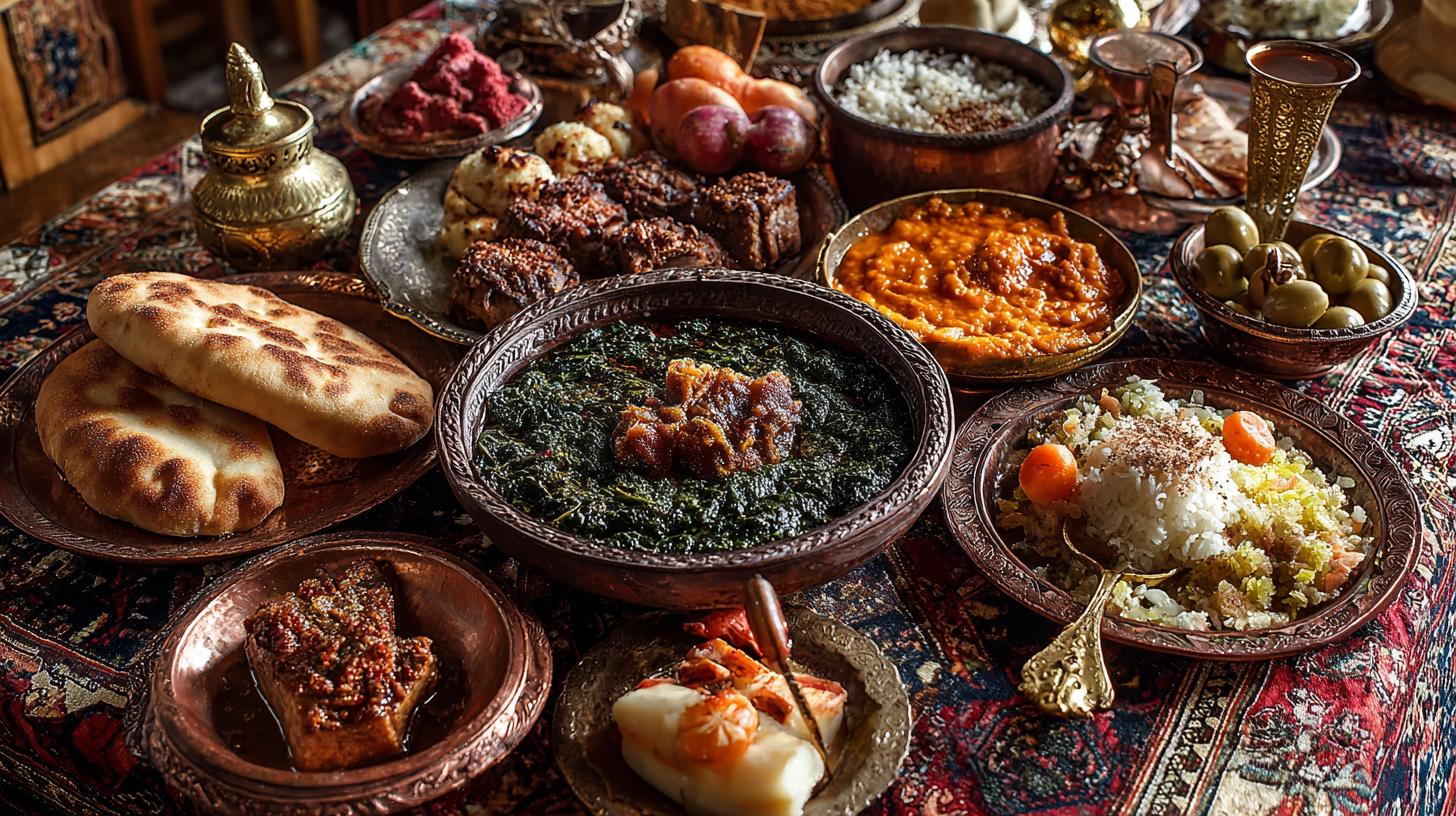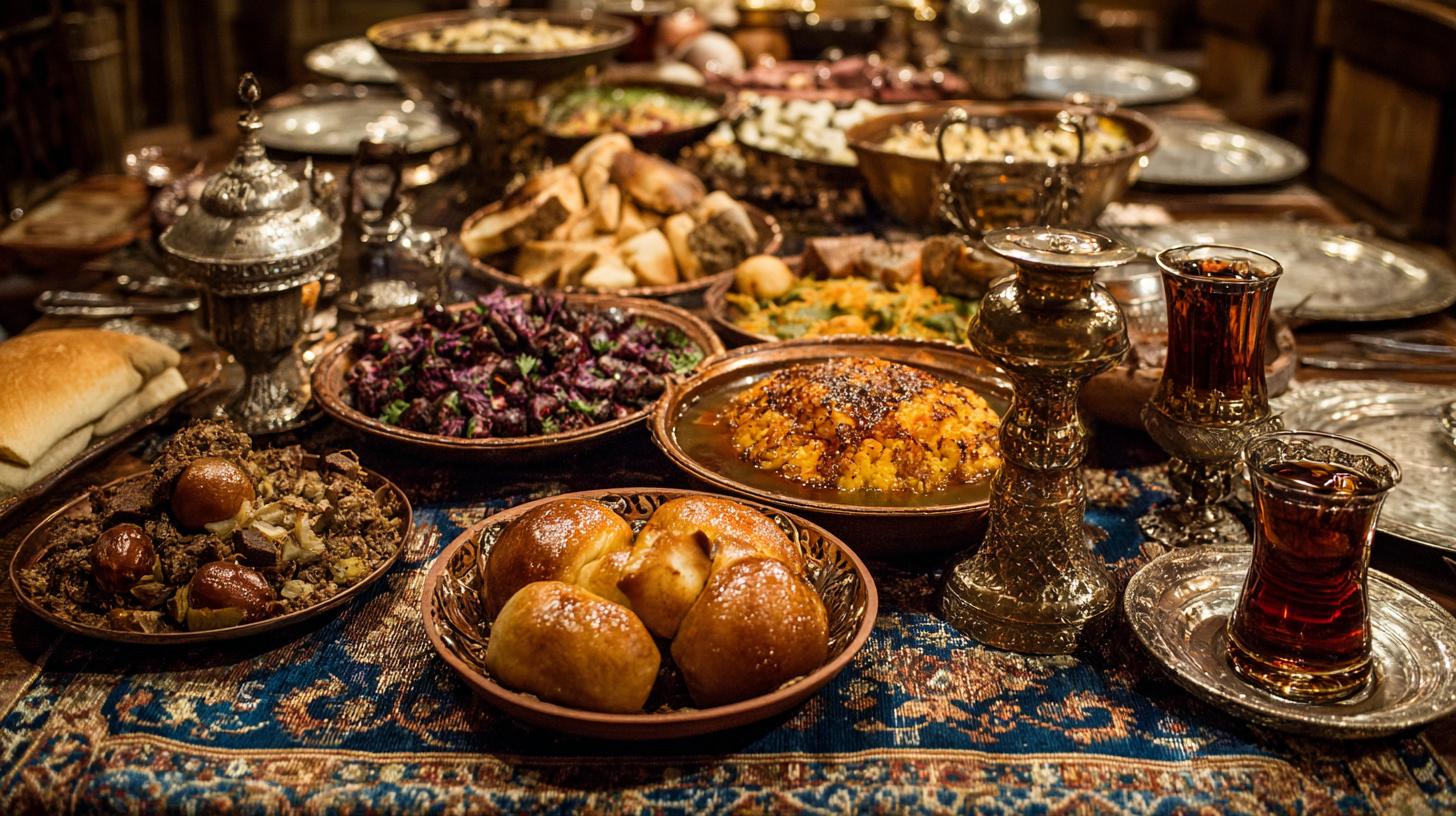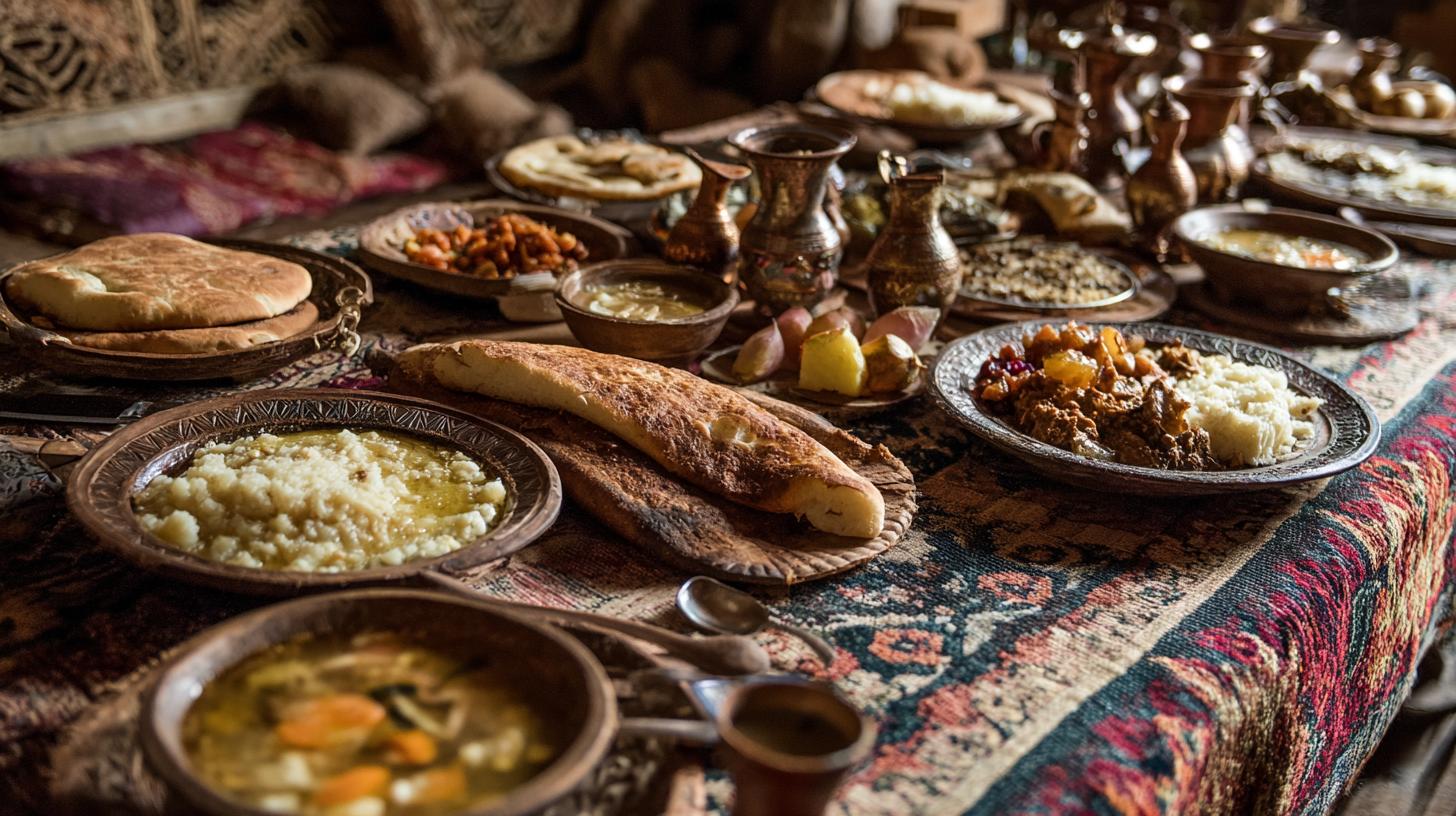Religious fasting is a profound practice that has shaped the culinary traditions of many cultures around the world. In Georgia, a country with a rich spiritual heritage rooted particularly in Eastern Orthodox Christianity, fasting plays a significant role not only in the spiritual lives of its people but also in the development of its cuisine. Understanding religious fasting and its influence on Georgian dishes unveils a fascinating story of how faith, tradition, and food converge to create unique tastes and culinary experiences.
Religious fasting in Georgia is primarily tied to the liturgical calendar of the Georgian Orthodox Church, which prescribes periods of abstinence from certain foods, especially animal products, to encourage spiritual discipline and self-restraint. These fasting periods, often extensive and frequent, have led Georgian cooks to perfect a range of plant-based dishes that meet religious requirements but remain flavorful and satisfying. Far from simple restrictions, fasting traditions have enriched Georgian cuisine with an array of inventive recipes that continue to be enjoyed, regardless of fasting status.
The Spiritual Roots of Fasting in Georgian Culture
To appreciate religious fasting and its influence on Georgian dishes, one must first look at the spiritual background. Georgia adopted Christianity in the early 4th century, making it one of the earliest Christian nations. The Georgian Orthodox Church, which remains central to the country’s identity, promotes religious fasting as a means of purification and devotion.
Fasting periods in Georgia are numerous; among them, Lent—the preparation for Easter—is the most significant, lasting around 40 days. Other fasting periods include the Advent fast before Christmas, the Dormition fast in summer, and several weekly fast days. During these times, believers abstain from meat, dairy products, and often fish, wine, and oil as well, depending on the specific day or period.
Such strict dietary limits have influenced not only religious life but culinary customs over centuries, cultivating a tradition of dishes that are completely plant-based or rely on permissible ingredients like grains, legumes, vegetables, and herbs.
Key Fasting Periods and Dietary Restrictions
Understanding the fasting rules clarifies the kinds of dishes developed. Below is a concise overview of common fasting periods and their dietary guidelines:
| Fasting Period | Duration | Food Restrictions |
|---|---|---|
| Lent (Great Fast) | Approximately 40 days before Easter | No meat, dairy, eggs, fish, wine, or oil on most days |
| Advent Fast | 40 days before Christmas | Similar to Lent, excluding certain fish and oil on designated days |
| Dormition Fast | 2 weeks in mid-summer | Meat, dairy, eggs prohibited; limited fish and oil permissible on some days |
| Weekly Fast Days | Every Wednesday and Friday | Partial fasting; mainly abstinence from animal products |
As these fasting intervals recur frequently throughout the year, Georgian cooks have mastered the art of creating meals that meet fasting criteria without compromising on taste or nourishment.
Vegetarianism and Veganism as a Result of Fasting Practices
When religious fasting is observed regularly, the population naturally adapts to periods of vegetarian and vegan eating. In Georgia, this has led to a culinary culture in which meat-based dishes and rich dairy products are balanced by a wealth of plant-based options that emerge from fasting traditions.
Georgians have long utilized the country’s fertile lands to produce a variety of vegetables, herbs, nuts, and grains, which form the backbone of many fasting-friendly meals. This reliance on plant-based ingredients during fasting has inspired recipes that remain popular throughout the year, blending heartiness and subtlety of flavor.
Understanding religious fasting and its influence on Georgian dishes is incomplete without exploring some of the iconic dishes that arose directly from fasting needs, such as lobio, ajapsandali, pkhali, and various types of bread and spreads.
Staple Ingredients in Fasting Dishes
The ingredients employed during fasting periods showcase ingenuity and diversity. Common staples include:
- Beans and legumes: Beans are a protein-rich ingredient crucial in fasting dishes.
- Walnuts: These are extensively used in sauces, spreads, and fillings, adding richness and texture.
- Eggplants: Often grilled or stewed, eggplants appear in various fasting recipes.
- Greens and herbs: Parsley, cilantro, dill, tarragon, and wild herbs add freshness and aroma.
- Grains: Wheat, corn, and cornmeal are used for bread, porridge, and other staples.
- Vegetables: Tomatoes, bell peppers, potatoes, and beets are commonly incorporated.
- Spices: Adjika, garlic, coriander, and fenugreek highlight the flavors.
These ingredients come together to form dishes that nourish body and spirit.
Notable Georgian Fasting Dishes
There are many examples of Georgian dishes demonstrating religious fasting and its influence on Georgian dishes, each reflecting the creativity necessitated by dietary restrictions.
Lobio – The Bean Delight
Lobio is a traditional Georgian dish made primarily from red kidney beans. It’s often served warm as a thick stew or mashed spread seasoned with garlic, onions, herbs, and walnut sauce. The dish is nutritious and satisfying, making it an ideal staple for fasting periods when meat is avoided.
Its variations might include different types of beans throughout Georgia’s diverse regions, but the core remains the same: a protein-packed, hearty bean dish that reflects the fasting ethos.
Ajapsandali – Georgian Ratatouille
This vegetable stew combines eggplants, tomatoes, bell peppers, onions, and garlic, simmered with herbs and oil. Ajapsandali exemplifies how fasting encourages the use of fresh, seasonal vegetables prepared in ways that highlight their natural flavors.
Ajapsandali is rich in taste but light enough to be consumed repeatedly during fasting, illustrating the balance between nutritional requirements and religious observance.
Pkhali – Nut and Vegetable Pastes
Pkhali refers to a variety of vegetable and herb pastes blended with ground walnuts, garlic, vinegar, and spices. Spinach, beet leaves, and cabbage are commonly used bases.
These small dishes, often served as appetizers, display the resourcefulness born from fasting restrictions. They are also visually colorful and texturally interesting, contributing to the festive nature of fasting meals despite limitations.
Mchadi and Other Breads
Cornbread or mchadi is a staple during fasting. This simple dish accompanies many meals and provides sustenance. Additionally, fasting rules do not restrict the use of certain oils or grains on many days, allowing for a variety of breads and pastries to be consumed.
Breads during fasting often differ from their richer counterparts by excluding dairy or eggs, yet they still deliver satisfying textures and flavors.
The Role of Sauces and Seasonings
A significant contribution of religious fasting and its influence on Georgian dishes lies in the creative uses of sauces and seasonings to enliven meals that otherwise lack meat or dairy.
One of the most essential fasting-friendly sauces is walnut sauce. Made from ground walnuts, garlic, coriander, vinegar, and spices, it is used liberally across many dishes, adding both richness and umami-like depth. Walnut sauce exemplifies how fasting periods have encouraged the development of complex flavors using plant-based ingredients.
Another essential seasoning is adjika, a blend of hot peppers, garlic, herbs, and spices. While sometimes containing small amounts of animal products, many versions are strictly vegan and perfectly suited for fasting days.
These sauces and spice blends not only complement dishes but demonstrate how religious fasting and its influence on Georgian dishes extends beyond ingredients to methods of preparation and seasoning that lift simple foods to something remarkable.
Seasonal and Regional Variations

Georgia’s varied climate and geography mean that fasting dishes vary between regions and seasons, each adapting to local resources and traditions. In mountainous areas, root vegetables, wild greens, and nuts dominate; in the lowlands, subtropical crops such as tomatoes and eggplants flourish.
For instance, the Adjara region on the Black Sea coast has its own fasting specialties flavored by the abundant vegetation and unique climate. Similarly, the mountainous Svaneti area showcases dishes that rely heavily on hardy grains, beans, and available greens.
Seasonality also dictates the types of vegetables and herbs used, making fasting cuisine dynamic throughout the year. This seasonal aspect enriches Georgian cooking and highlights how religious fasting and its influence on Georgian dishes is deeply connected to agricultural rhythms.
Comparison Table: Regional Fasting Ingredients
| Region | Common Fasting Ingredients | Typical Fasting Dishes |
|---|---|---|
| Adjara (Coastal) | Tomatoes, eggplants, walnuts, herbs | Ajapsandali, walnut pkhali |
| Svaneti (Mountainous) | Beans, root vegetables, wild greens | Lobio, vegetable stews |
| Kakheti (Eastern) | Beans, corn, walnuts, herbs | Mchadi, pkhali |
| Imereti (Western) | Beans, nuts, cornmeal | Various legume dishes |
This regional diversity confirms the broad influence religious fasting has on shaping local cuisine across Georgia.
Religious Fasting and Social Gatherings in Georgia
Fasting practices not only influence what people eat but how they come together. Georgian culture is renowned for its supra, or feast, which traditionally involves an abundance of food and wine, symbolizing generosity and community spirit.
Interestingly, even during fasting seasons, supras maintain their importance, but the food offerings change according to fasting rules. Instead of meat-heavy platters, a fasting supra includes an array of vegetable-based dishes, breads, nuts, and homemade sauces. The social act of sharing food remains central, reflecting how religious fasting and its influence on Georgian dishes does not diminish communal celebration but rather introduces variations respecting spiritual commitments.
Such gatherings often feature hymns and prayers related to fasting periods, making the meal a holistic expression of devotion, fellowship, and culture.
Modern-Day Impact and Culinary Continuity

In contemporary Georgia, despite secular trends and globalization, religious fasting and its influence on Georgian dishes persist strongly. Many people continue to observe fasting both for spiritual reasons and as a cultural tradition, which in turn preserves these unique culinary practices.
Modern Georgian chefs and home cooks often see fasting dishes not merely as temporary restrictions but as a source of inspiration. Contemporary cuisine has seen revivals of traditional fasting recipes, sometimes updated with new techniques or fused with other food cultures, yet keeping their fasting roots intact.
Restaurants in Georgia and Georgian diaspora communities frequently offer fasting-friendly dishes, recognizing their importance within local identity and culinary heritage. This continuity ensures that religious fasting’s impact on Georgian dishes remains visible and vibrant in daily life.
The Nutritional Perspective of Fasting Dishes

Religious fasting and its influence on Georgian dishes also involve a practical nutritional adaptation. The emphasis on plant-based foods, nuts, and legumes during fasting offers a diverse nutrient profile rich in fiber, proteins, vitamins, and minerals.
Because meat, eggs, and dairy are restricted during fasting periods, Georgian fasting dishes incorporate other sources of protein and fat, such as beans and walnuts, to maintain energy and health. This balance highlights not only culinary creativity but pragmatic attention to well-being.
Here is an example of the nutritional contributions of popular fasting ingredients:
- Beans: Good source of protein, fiber, iron, and B vitamins.
- Walnuts: Rich in healthy fats, antioxidants, and omega-3 fatty acids.
- Vegetables: Provide vitamins, minerals, and antioxidants.
- Herbs and spices: Add flavor and have various health benefits, including anti-inflammatory properties.
This nutritional emphasis suggests that religious fasting and its influence on Georgian dishes go beyond ritual and tradition, contributing to a balanced dietary lifestyle.
Challenges and Adaptations in Modern Life
While fasting remains an integral part of Georgian culture, modern life presents challenges. Urbanization, busy schedules, and changing social habits have altered how strictly people observe fasting rules.
Some may find it difficult to prepare fasting dishes daily, leading to the rise of ready-made or convenience foods that attempt to replicate traditional fasting flavors. Yet, this also opens opportunities for innovation, with food producers creating products inspired by fasting ingredients and recipes.
Moreover, increased global interest in plant-based diets has brought renewed attention to traditional Georgian fasting dishes, positioning them as natural for those exploring vegetarianism or veganism beyond religious practice.
Such adaptations show that religious fasting and its influence on Georgian dishes continue evolving, responding to societal shifts while retaining their essence.
Religious Fasting and Its Influence on Georgian Culinary Identity
Above all, fasting in Georgia is not just a spiritual discipline but a powerful force shaping culinary identity. It encourages a respect for seasonality, creativity in food preparation, and a sophisticated palate attuned to the variety of plant-based tastes and textures.
This relationship between religion and cuisine has elevated Georgian fasting dishes from mere substitutes during abstinence to beloved components of the country’s food heritage, appreciated by both fasting adherents and non-fasters.
In this way, religious fasting and its influence on Georgian dishes represent more than just dietary rules—they narrate a cultural journey, connecting generations with traditions, beliefs, and the land through the universal language of food.